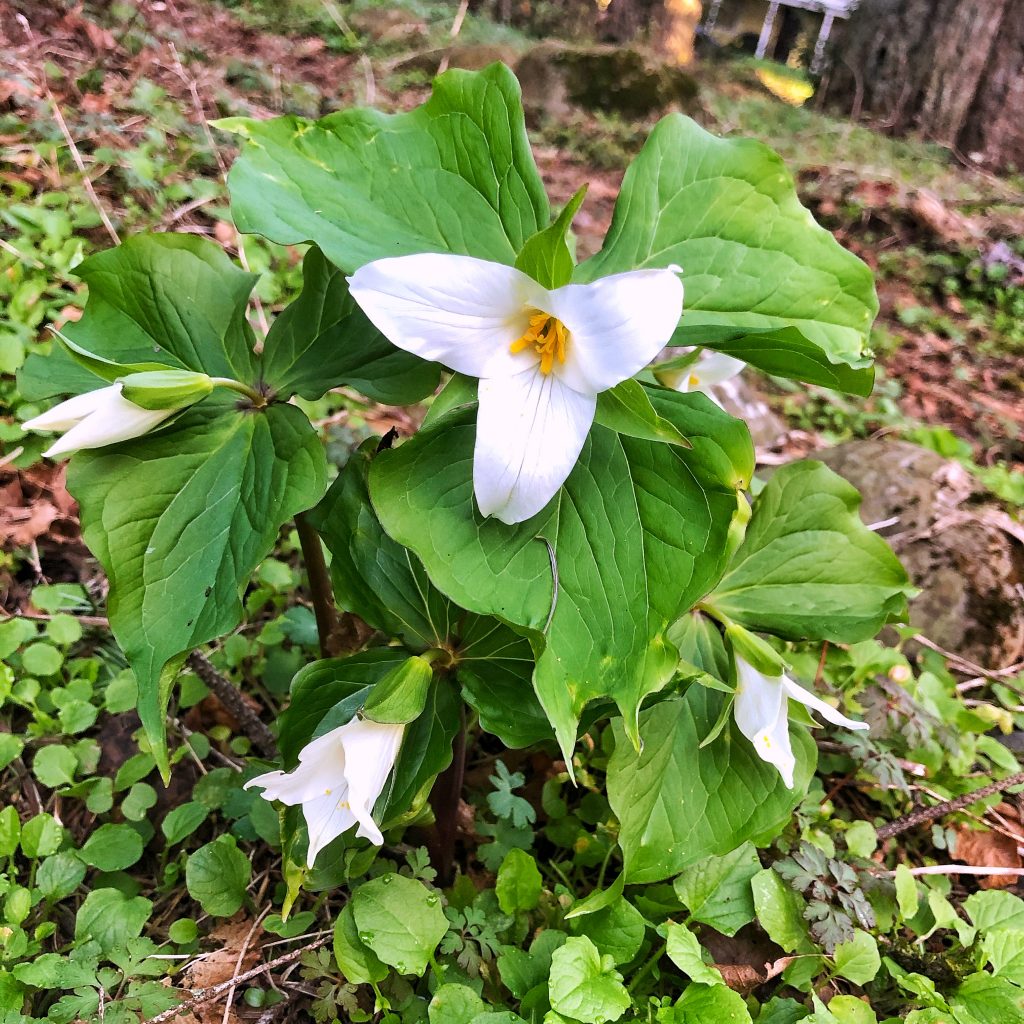
These beautiful flowering plants, another true herald of spring, go by many common names, including western trillium, Pacific trillium, western wakerobin, and western white trillium. I have also heard it called Easter lily by many countryfolk born in the PNW, because of the time when it blooms in profusion.
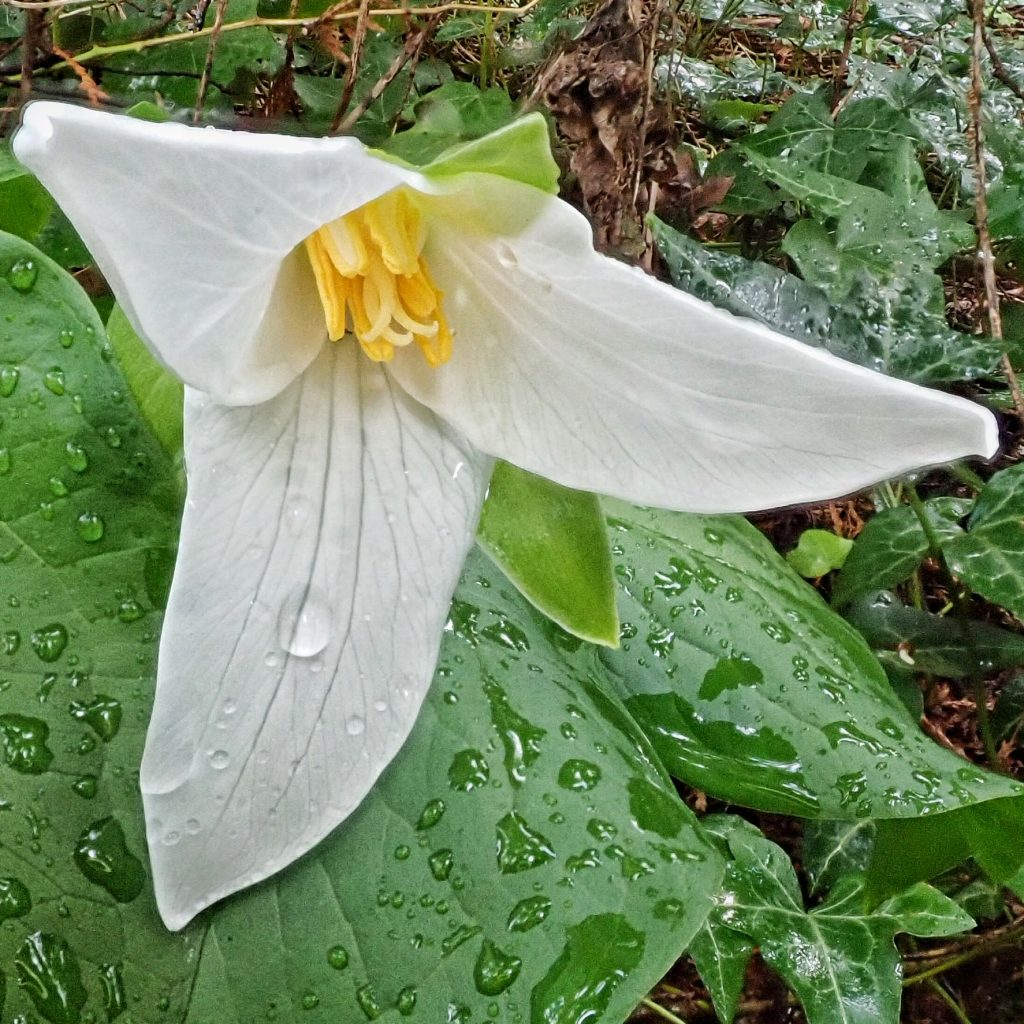
They are able to bloom so early because they store energy in the rhizome during their spring emergence, rather than channeling it into greater growth. And then, when the seed containing fruits have matured, the plant withers rather than using up the precious stores. These fruits are then carried off by ants to be eaten by the colony. The leftover seeds are discarded, where they can then germinate in the rich soil of the mound. This process of seed dispersal by ants is called myrmecochory.
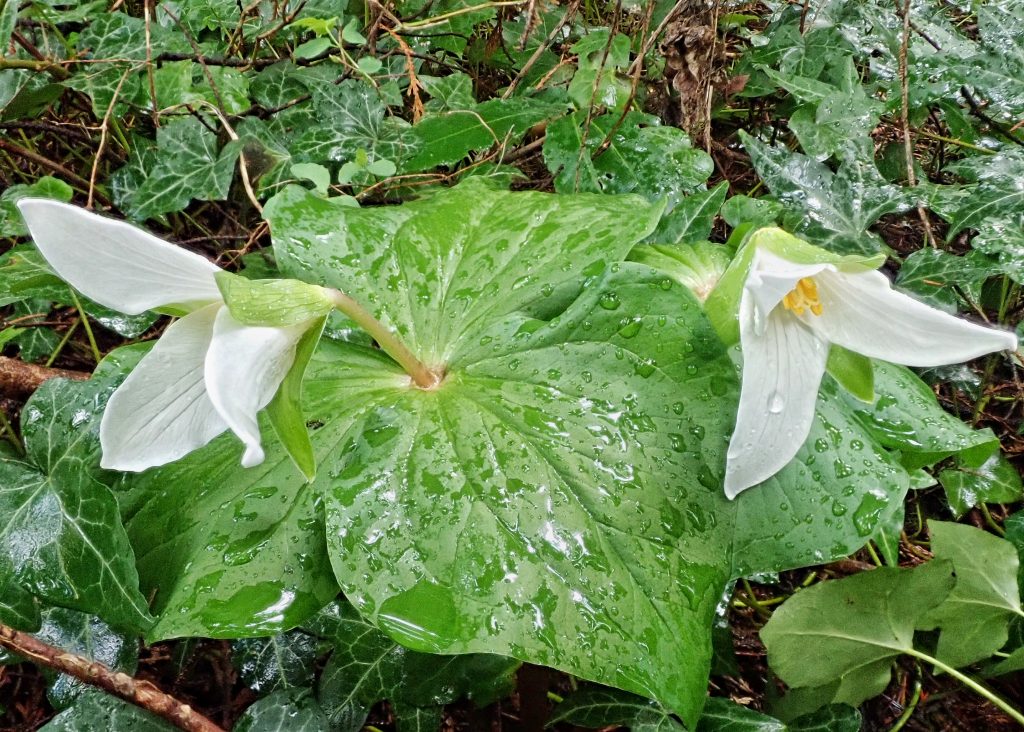
Trillium sp. are interesting in that what they present is just a flowering scape, and what most people think of as the leaves are actually bracts, though they do photosynthesize like leaves, and most of the sugar energy stored in the rhizome is produced by these bracts. The ‘stem’ is a scape, which is a leafless flower stalk (peduncle) arising directly from a rhizome or bulb. Periodically throughout its life span the plant produces bracts but not flowers, which is considered a regressive stage, and sometimes the rhizome undergoes 1-5 years of dormancy between flowering stages, which may be why they can live for up to 40 years.
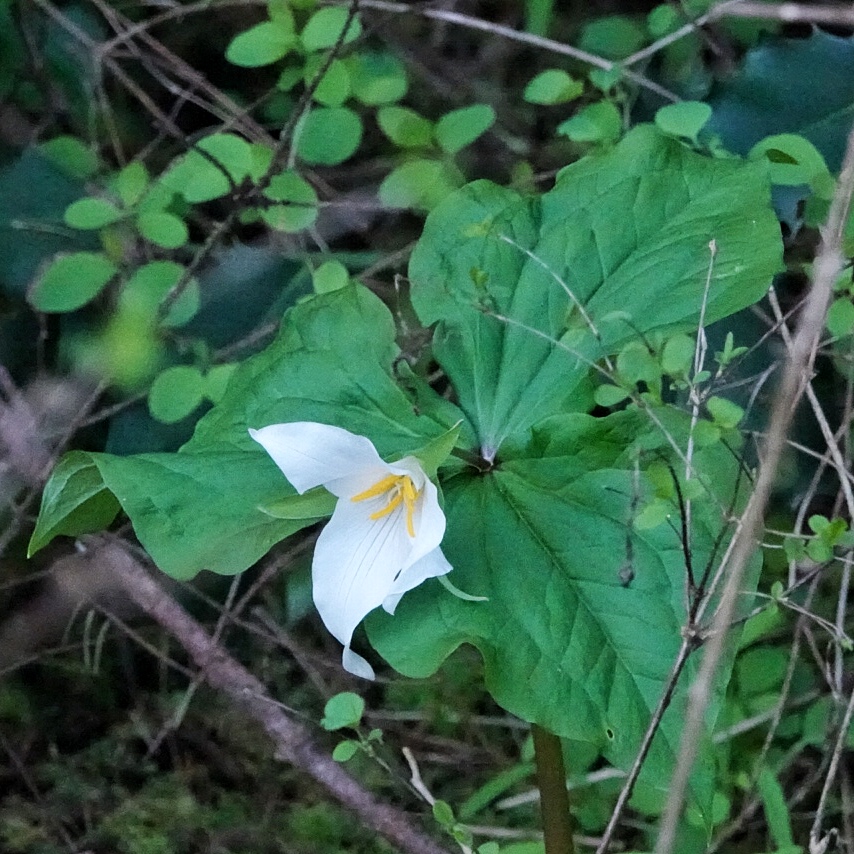
As with so many other species in this age of molecular analysis, the taxonomy of Trillium ovatum has been in flux. For a couple of hundred years, since Linnaeus’ first catalogued them, Trillium has mostly been in the family Liliaceae, although there have been detours into Trilliaceae. And then in the 90s DNA data prompted a move to move them to the resurrected family Melanthiaceae, and there was later analysis that suggested that Trilliaceae should be resurrected to contain them.
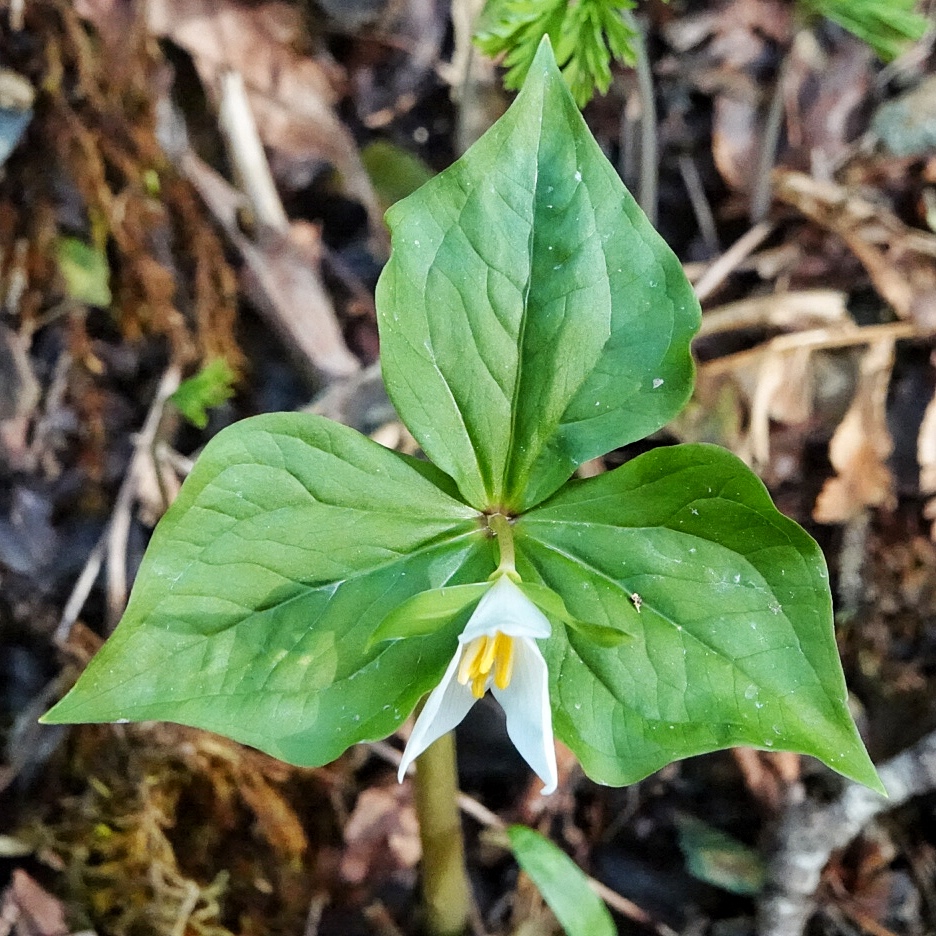
These things are always at least somewhat controversial, but now that the dust has settled, and despite the fact that the majority of field guides and even online resources still place them in Liliaceae, the most recent scientific botanical works for our region, ‘Flora of Oregon’ (Myers et al, 2015) and ‘Flora of the Pacific Northwest’ (Hitchcock et al, 2018) both place them in the family Melanthiaceae.
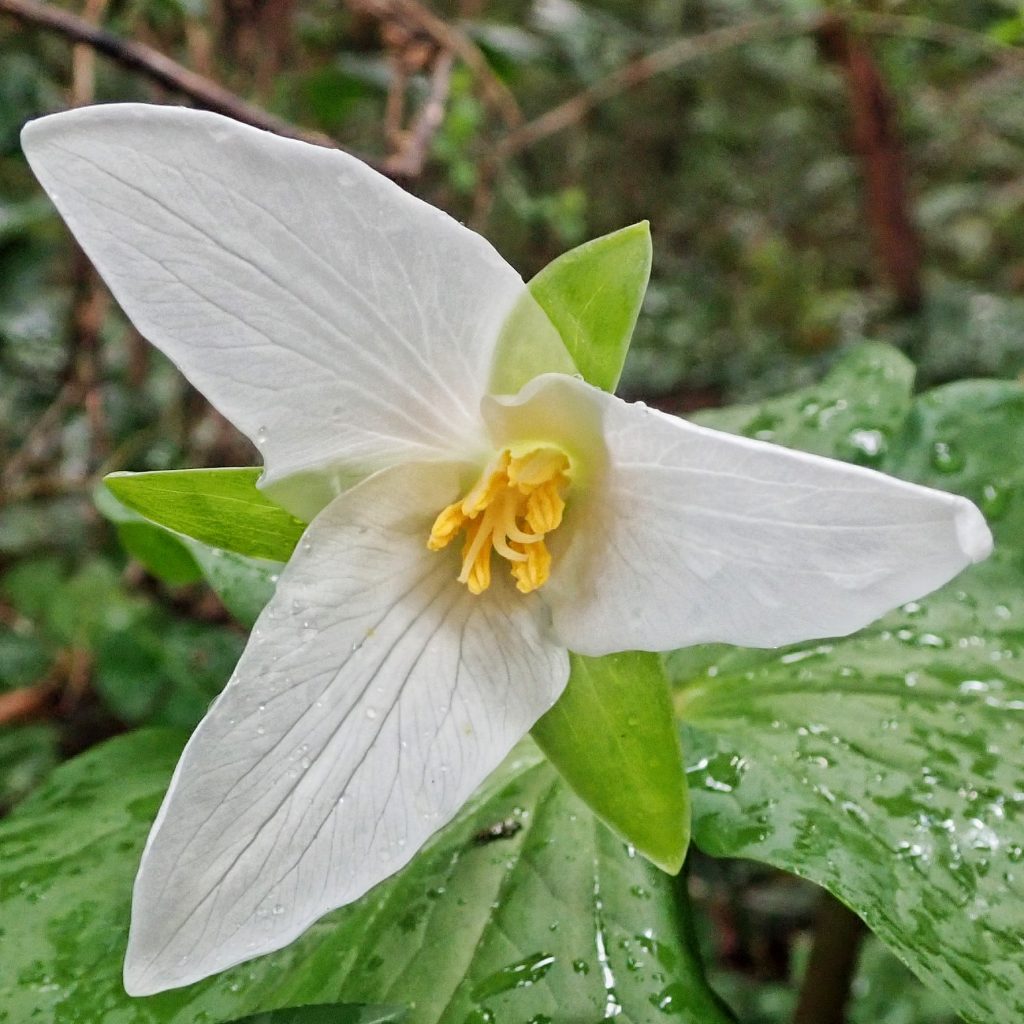
A fun fact about Trillium ovatum; the type species was collected by Meriwether Lewis from near the Columbia River in 1806, during the return trip of the Corps of Discovery expedition, although FT Pursh, who was working for BS Barton, to whom the collection was entrusted since he was Lewis’ botanical mentor, didn’t formally describe it until 1814.
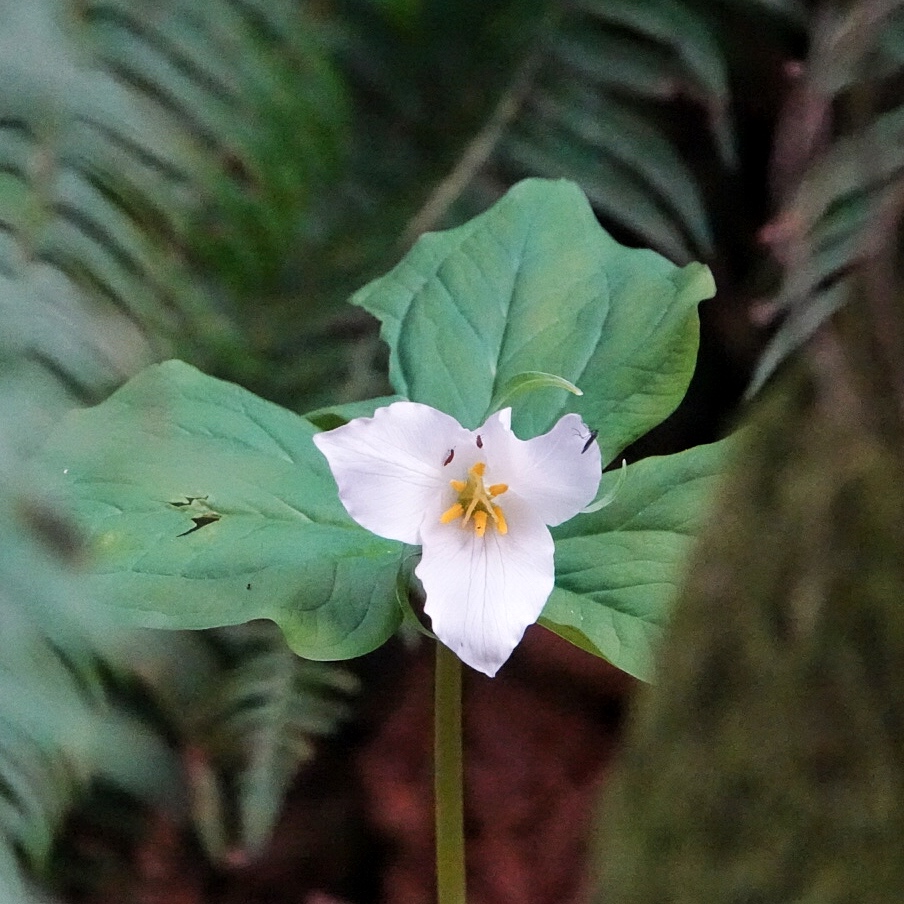
Contrary to what I was told many moons ago, picking a trillium does not kill it. In fact merely taking the flower causes no problems at all, although it is always bad form to pluck a wildflower merely for decoration, since you are interrupting its reproductive phase. But injuring the bracts, or especially breaking the scape, may cause it to become dormant and fail to flower the following year, because the bracts didn’t have time to replenish the energy stores of the rhizome. Repeated picking of the entire flower scape, or repeated grazing by deer and other herbivores, can kill the rhizome. And all of this is in addition to the fact that in some places it is illegal to pick them.
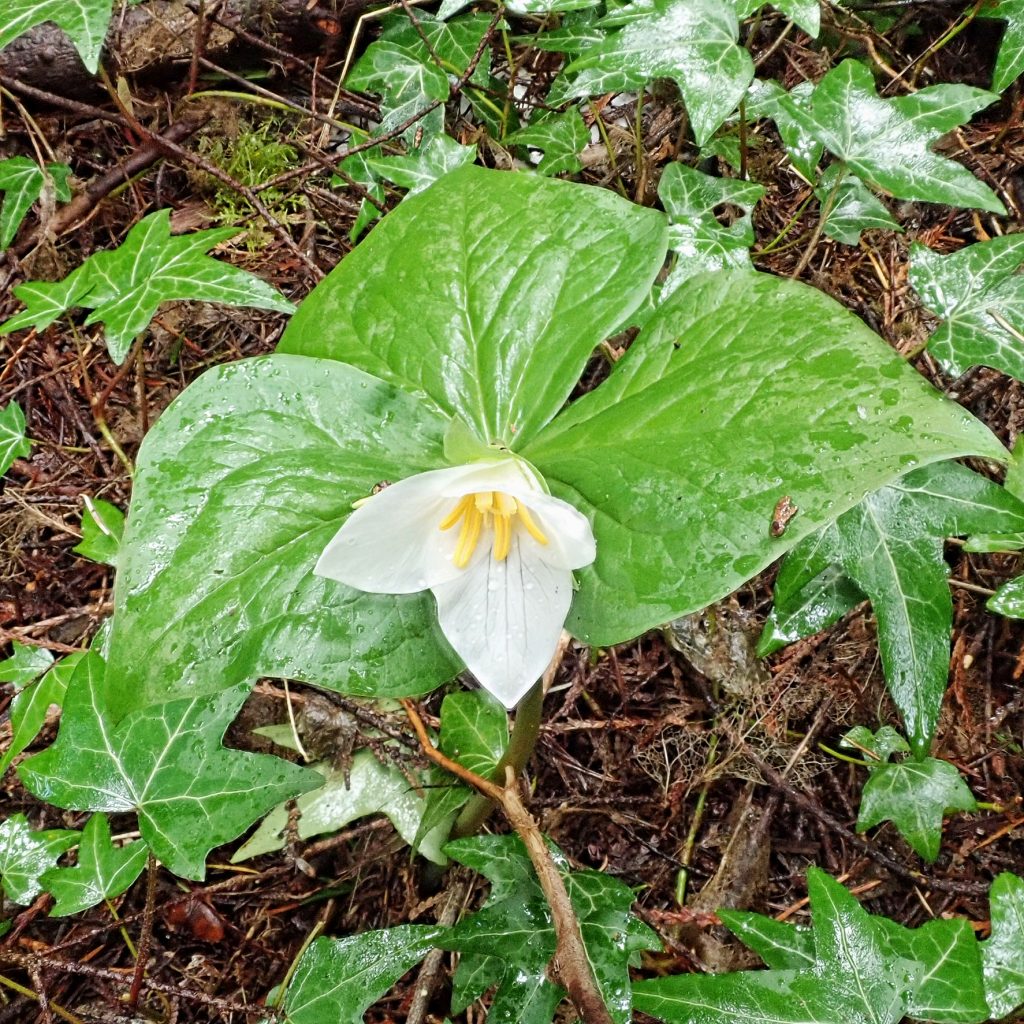
Description– Tall (up to 16” scape) with 3 large, ovate, unmottled bracts; flowers are on a pedicel above the bracts, with 3 green sepals, and 3 white petals, which turn pinkish to purple with age.
Similar species– T. rivale is only found in the Siskiyous and Klamath Mtns, scape is less than 8” when the flower opens, flower color doesn’t change with age; T. albidum has a sessile flower, and lightly mottled leaves; otherTrillium have a sessile, red flower.
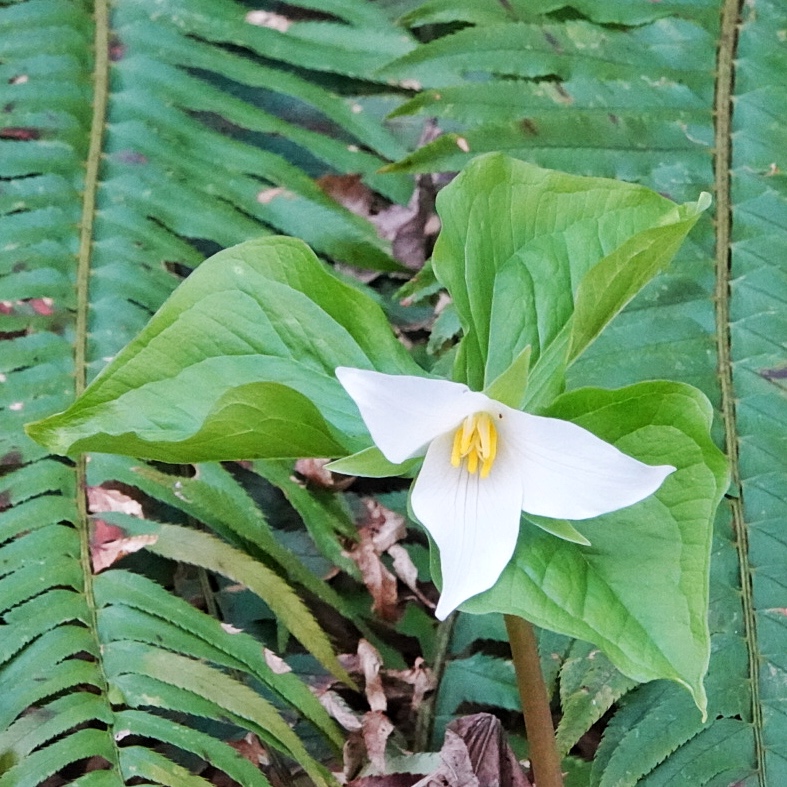
Habitat– Dappled to deep shade in moist to mesic forests and mixed woods, up to 6,000’ elevation.
Range– Western North America; region wide in forests, absent in shrub steppe, and other arid, open areas.
Reproductive timing– Blooms March through June, depending on elevation.
Eaten by-Slugs and snails, as well as deer.
Etymology of names– Trillium is from the Latin for ‘three parts’, and refers to the fact that the bracts, petals, and sepals are all in groups of three. The specific epithet ovatum is from the Latin for ‘egg shaped’, and refers to the ovate leaves. The common name of wake robin for many Trillium sp. refers to them blooming in early spring, about the time the robins arrive. This, of course, is not applicable in the lower elevations of the PNW where we have a significant number of robins year around.
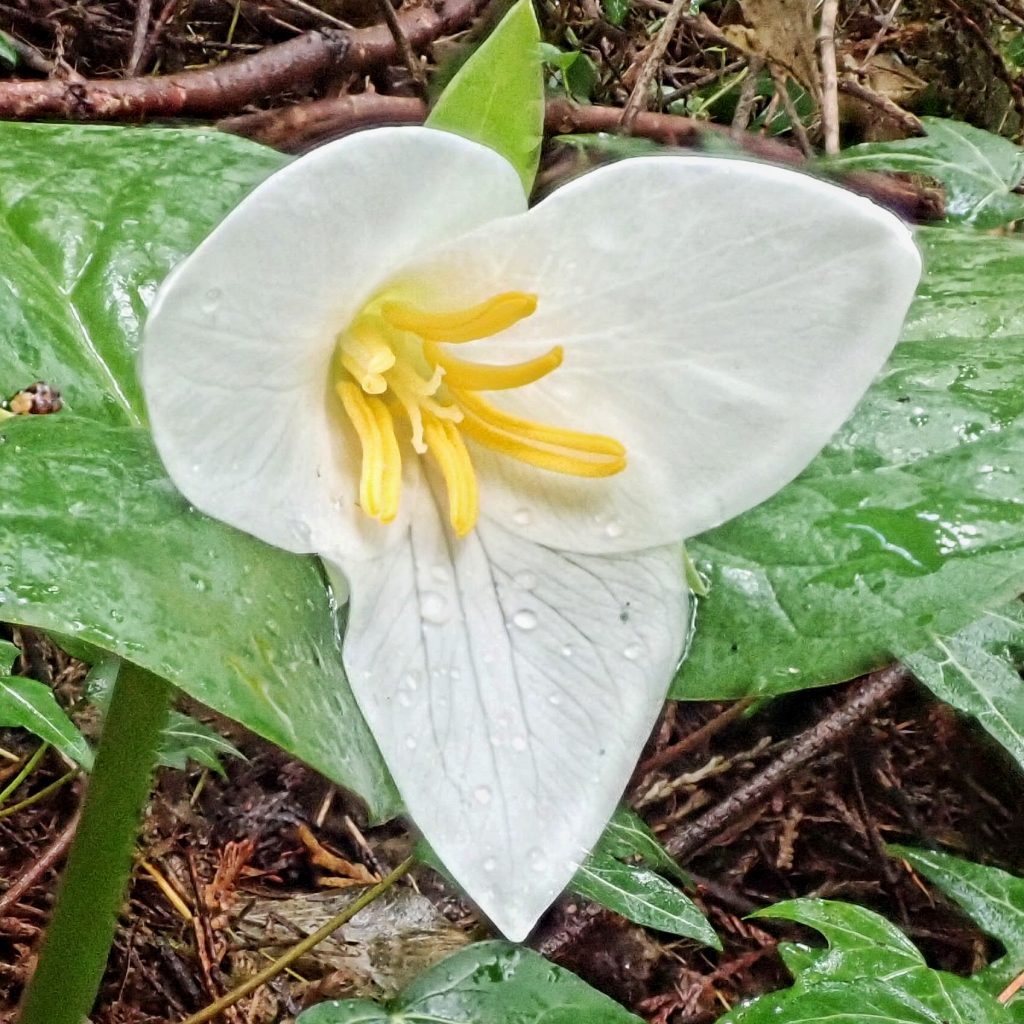
http://www.efloras.org/florataxon.aspx?flora_id=1&taxon_id=242102002
Trillium ovatum | Western Trillium | Wildflowers of the Pacific Northwest
https://oregonflora.org/taxa/index.php?taxon=8936
https://tryoncreek.wordpress.com/2016/04/29/trilliums-the-dark-side/amp/
https://www.fs.fed.us/wildflowers/beauty/trilliums/about.shtml
https://www.jstor.org/stable/24996901?seq=1#metadata_info_tab_contents
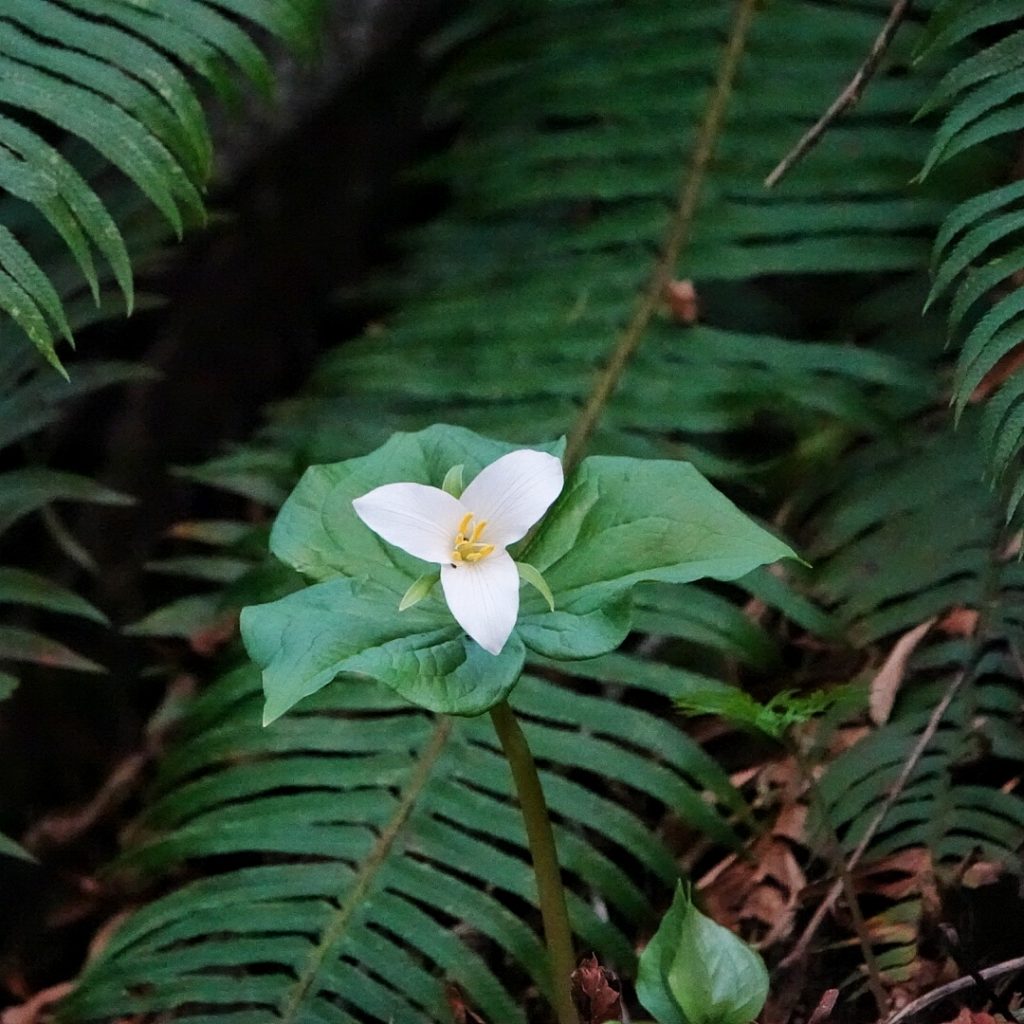
Dan, in your recent interview on YouTube, you mentioned having hurried along and missed a flower or two.
With this blog I have realized I hurried through for the thirty years I was there. A naturalist zombie.
The one flower I thought I could reliably identify was trillium. Often went to Tryon just for trillium.
Imagine my dismay now that I realize there are not only several trillium (oooo look a RED one!), but also that now I see that that plants also have family problems!
Myrmycochory indeed!
Sincere thanks for that link…
— Keep up the great work —
Thanks Ray! And, most likely, all you ever saw at Tryon was Trillium ovatum. Possibly a T. albidum, but they are scarce. Most of the red ones are well east or south of Portland. And yeah- myrmecochory is really interesting!
This is a wonderful piece. As a newbie to all this plant stuff I am fascinated by the interrelationships and the interdependence of everything. I am especially liking the etymology of the names of each plant. Thank you so much for enriching my mind with every post.
Thank you for your appreciation!
What an interesting & thorough profile of a favorite plant of mine! Learned a lot & love the pictures! Thank you ☺️
Thanks, Dan, for highlighting my favorite spring flower! FYI – According to a professional paper about Trilliums in western Montana they might live for 70 years. I’m looking for that paper to give you the source. Ryan Karlson, the Washington State Parks guy in charge of interpretive programs introduced us to that fact at Lake Sylvia State Park (in Montesano, near Aberdeen) during one of our first “Trillium Treks” a few years ago. We regularly count a thousand blooming plants every April in the park and along nearby trails. This year’s event is Saturday, April 17. Of course you are invited!
Cool! I will amend that when I have the information. The article I read said it couldn’t be determined accurately because times of dormancy, and times where it may have put out two scapes, couldn’t be ascertained. Sounds like a fun time at your ‘Trillium Treks’!